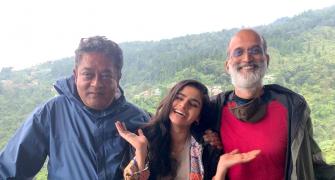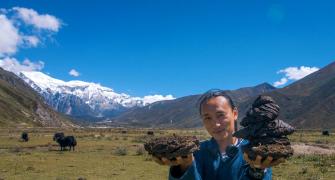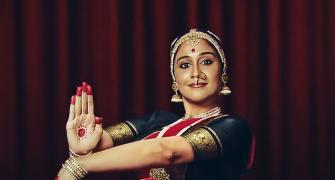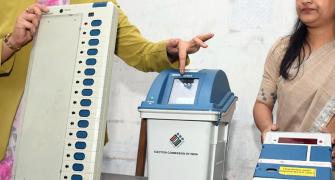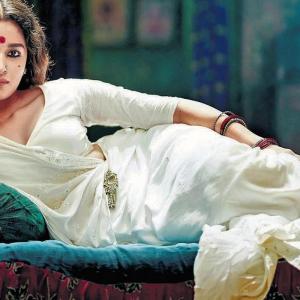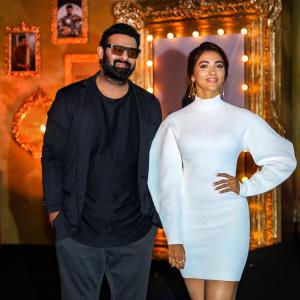'Kangana is such a stylo, she knows what will look good on her.'
'If you can explain to her why you are using a certain print on her or why you are putting a hairband on her head, if you have a reason for that, she will not question you.'
'She listens.'
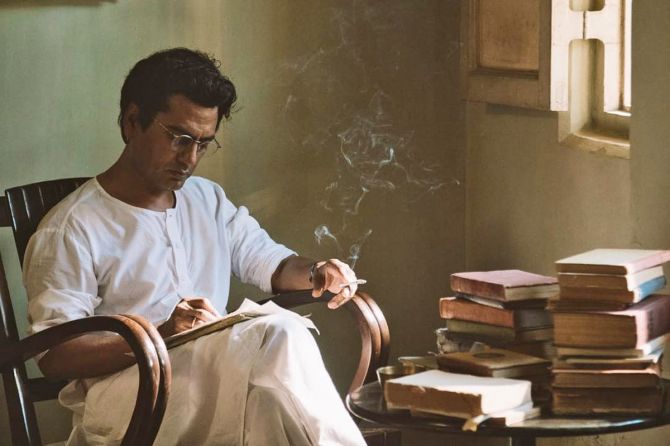
If Sheetal Iqbal Sharma has designed the grand costumes for Sanjay Leela Bhansali's Gangubai Kathiawadi, he has also made clothes for Nandita Das' realistic Manto.
If, on one hand, Bhansali doesn't show poverty in his films and won't show someone standing on the streets in 'phate hue kapde', Das wanted 'everything out of old boxes'.
It's really all in a day's work for this 38-year-old costume designer, and he does every film with renewed passion.
"Besides Miss Lovely, Kesari was very tough," Sheetal tells Ronjita Kulkarni/Rediff.com in the concluding segment of the interview.
You have designed costumes for realistic biopics, like Batla House and Manto.
Yes, we spoke to the cop Sanjeev Kumar Yadav and his wife, for Batla House. We took their pictures.
We didn't make the actors look exactly the same, but basically, how a newsreader (Sanjeev Kumar's wife was a newsreader) would dress up.
Nandita Das is the opposite of SLB. She likes it as grimy and real as it can be.
If Manto lived in a mental asylum, then it had to look like one. We spoke to Manto's daughters in Lahore, a lot of pictures were shared.
Even Raees was a real story of a bootlegger from Gujarat.
In India, you cannot glorify a gangster, there are restrictions on that. Still, you can give him style. Shah Rukh had a different look in that film with his Pathanis and his surma eyes.

Which film have you done the most research for?
My first film, Miss Lovely.
In 2010, the production house called me and said they were making a low budget, indie film about B-grade cinema of the 1980s.
I had to watch those crass films, take screenshots, look at the colour palate...
I didn't know what film costume designing was, or how to work with a crew, so it was difficult to get into that whole mould of Indian film-making.
Also, how do you work on an indie film with a budget of Rs 8 crore-Rs 9 crore? It was like a passion project.
Unfortunately, not too many saw that film. How did you get more work after that?
Ashim Ahluwalia, the director, knew someone at Excel Entertainment.
That's how I got my next film, Game.
It's a very boring film, but the exciting part for me was that I got to design a big film and travel to Greece, London, Thailand, Istanbul, Bangkok for six months.
After that, I did the other Excel film Don 2.
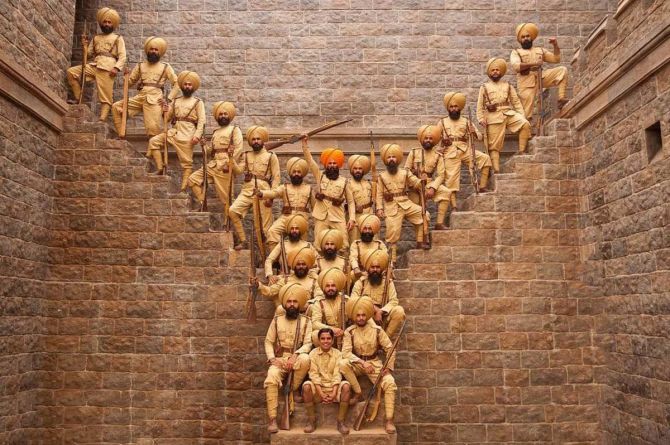
Which was your toughest film?
Besides Miss Lovely, Kesari was very tough.
We were shooting in so much heat and dust, the war sequences...
Those turbans were 24 metres long.
The beards.
The blasts.
The blood.
The dirt.
The Afghans were wearing fur in that heat. When they would remove their clothes, they would be drenched in sweat.
The clothes would be smelling.
So we would have to get them cleaned every day so they could wear them the next day, but make sure they were dirty to maintain the continuity.
There were 1,400 soldiers playing Afghan soldiers, 21 Sikhs, their body doubles...
We had to make sure the bullet holes and blood were placed on the correct points in the clothes to maintain continuity.

You have worked with Kangana Ranaut quite a bit, in Judgementaal Hai Kya, Katti Batti, Dhaakad... Is she easy to work with?
She will have strong opinions about script and direction, but Dhaakad went so smoothly.
She herself is such a stylo, she knows what will look good on her.
I had a very interesting rapport with her.
If you can explain to her why you are using a certain print on her or why you are putting a hairband on her head, if you have a reason for that, she will not question you.
She listens.
We just finished her first home production Sheru with Nawaz.
Being a producer, she was there for every department, talking to actors, looking into Hair and Makeup and how it's doing, looking at how the art designing was going and what kind of curtains they are using...
Whatever her political beliefs are, I don't get into that at all.
I don't understand politics.
I don't have a strong opinion about Narendra Modi or Rahul Gandhi or even Karan Johar. I don't understand all that.

There are so many small town movies coming out. How do you make sure they look different from the rest?
In Mimi, Kriti Sanon plays a Rajasthani girl, who wants money to come to Mumbai and become an actress. But for money, she becomes a surrogate.
I could have just made her wear a salwar kameez like how Rajasthani girls wear.
But to make sure that Kriti Sanon does not look like Kriti Sanon (you have to go that extra step).
She wants to be an actress, so she would be more stylish than the other girls.
In Stree, Rajkummar Rao is a gaon ka ladies tailor. But he';s an experimental designer who experiments on himself, so you can see chains on his jeans, or he wears trackpants...
Now, I'm working on Madhur Bhandarkar's Babli Bouncer with Tamannaah Bhatia.
Madhur sir is very generic in his approach. He doesn't want to create style.
Tamannaah plays a Harvani village girl, but she's very strong. He thought we would just make her wear salwar kameez but we gave her clothing a slightly masculine touch. She's slightly androgynous.
She wears oversized clothes.

What happens to these beautiful outfits after the shoot is over?
They sadofy (rot) in the godown!
Some designer may reuse outfits for secondary characters or crowds.
When I start a film, the first thing I do is see what's available in the godown. Like there may be cop outfits, saris...
At SLB, they store outfits very well. I think maybe at some point, he will open a museum for these outfits. A proper inventory is made.
Some production houses sell outfits at a cheaper rate to other films.
Dharma and YRF does a lot of recycling.

How did you become a costume designer?
I am a very good cook and so I took up hotel management. But I left midway because I realised it also involves a lot of maths and book-keeping.
I continued my graduation from Bombay University, and in my final year, I took an aptitude test. It said I should join a creative field.
I decided to join a fashion college. I did my graduation there and went to London for a master's degree in period costuming. This was in 2008.
Then the recession happened, and the UK had no jobs.
I came back and didn't know what to do next.
For six months, I sat at home.
I thought I could start designing for a brand, like Pantaloons or West Side and started sending my resume.
But somehow, my portfolio of my research work reached Ashim Ahluwalia, the director of Miss Lovely.
They called me, and that's how my journey started.


